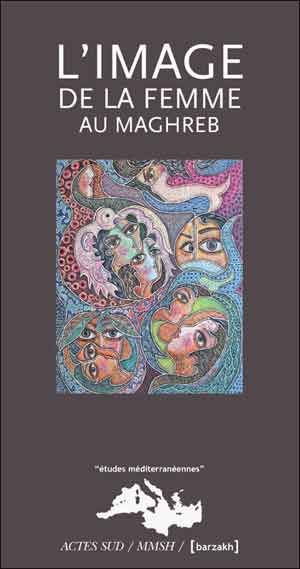
“The evolution of the conditions of women still appears crucial for understanding the changes underway in Maghreb societies today,” Khadija Mohsen-Finan writes in her introduction. These changes can be grasped through the evolution of the way society as a whole looks at women and their role.”
Moroccan journalist Zakia Daoud opens her article (“The Situation of Moroccan Women in the Press and Other Media”) by this trenchant observation: “A culture war, sometimes latent and sometimes manifest, has been underway in Morocco since 2000. . . . The evolution of the situation of women remains the center and symbol of two social projects in conflict.” At the same time, she notes, this struggle is not only between “Islamists” and “secularists”; she compares three different visions: a “modernist” vision, strengthened by the amendment of “Modawwana” (personal law) in 2004; an “Islamist” vision, which, in spite of its advocacy of “return to origins,” cannot possibly be called “traditional”; and lastly a “societal vision,” in which women are a scene of paradoxes where manifestations of the most self-consciously modern and those of the most intensely conservative are juxtaposed.
Not limiting herself to the main topic of her article, Zakia Daoud examines the changes in the condition of Moroccan women from other angles than those of their representation in the media: from women’s entry into the world of media (where they are no longer simple “auxiliary elements”) and politics (opposition parties, government circles, etc.), the improvement of their economic role, to their involvement in the struggles for human rights and, finally, their “acquired citizenships,” such as the reform which accorded women in mixed marriage the right to transmit their nationality to their children. From this detailed examination, the author concludes that the condition of women in Morocco is a complex process: the opening up of Moroccan media has not remained without influence on the elaboration of female social models, which are no longer easily categorized as “traditional” or “Westernized.”
The subject of the article by Algerian journalist Ghania Mouffok is more precise: “Algerian Women in Print.” The author sets out her hypothesis straightaway: “When the media take interest in ‘Algerian women,’ they most often do so from the angle of violence which women suffer: ‘women victims of terrorism,’ ‘mothers of the disappeared,’ ‘women victims of the Family Code.’ So much so that the expression ‘Algerian women’ almost immediately evokes rivers of blood in the unconscious. Rarely has a civil war been so insistently symbolized by women.” This symbolism, Ghania Mouffok explains, has been constructed by the European — especially French — press, which, to support the “modernized” Algerian elites, has represented the struggle against Islamism as a struggle to save women from religious dictatorship, ignoring the fact that women are no less attracted to Islamist politics than men are.
Analyzing a mass of articles and photographs published in a specific time period, the author captures the media’s main clichés about women. One of them is to make women “heroines” who endure, uncomplaining, all manner of privations and domestic violence. Another is to make them “resistant fighters,” yesterday against colonialism, today against Islamists.
Tunisian art critic Hédi Khellil tackles “representation of women in cinema” by way of a long review of female characters in major films produced in Tunisia since its independence in 1956. Cinema is the mirror in which the evolution of the condition of women in Tunisia is reflected, or so Khellil writes in substance. He goes so far as to attribute an activist mission to the seventh art, a mission of “shaking up mental inertia and raising consciousness.” Of interest as it is for specialists, this detailed review makes difficult reading for those who are not well versed in the Tunisian cinema.
The closing chapter of the book is an article on the most universally understood topic: “Women College Graduates in the Maghreb and Their Image in Society,” by Pierre Vermeren. This French historian studies the evolution of social representation of this category of women in the light of political, social, and economic upheavals that the Maghreb countries have experienced since their independence. He states that, if the past representation of this category of women was inspired by limited models, those of “Western women” to be precise, its inspirations have become diversified with the expansion of satellite channels, particularly Arab ones.
Pierre Vermeren reminds the reader that, over several decades, the Maghreb women have conquered public and professional spaces incommensurable with those that women occupied in the 50s and 60s, during the birth of the current Maghreb states. Nevertheless, he notes, as in other Mediterranean societies, women of the Maghreb are up against the “glass ceiling” blocking their access to the highest leadership positions. “The Maghreb has never had a woman prime minister, nor a woman chief executive of a big corporation, nor a woman head of a national security agency,” he points out.
Yassine Temlali is an Algerian journalist. The original article “‘L’image de la femme au Maghreb’: clichés tenaces et mouvantes réalités” was published by Babelmed on 14 April 2009. Translation by Yoshie Furuhashi.
